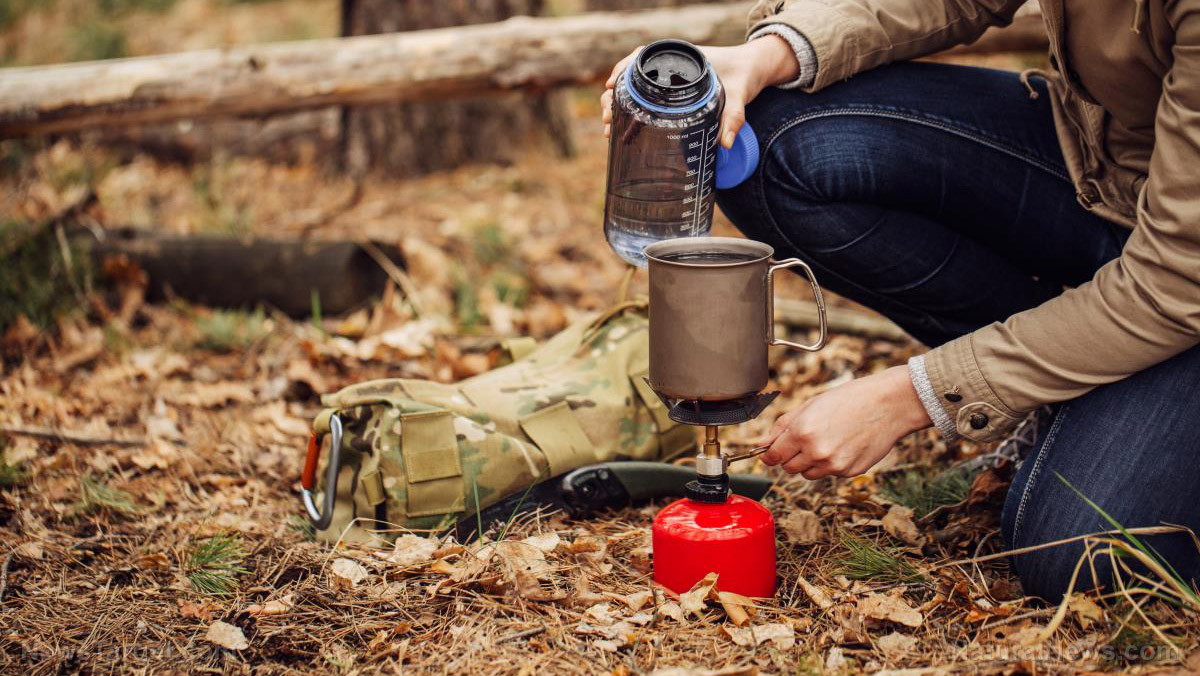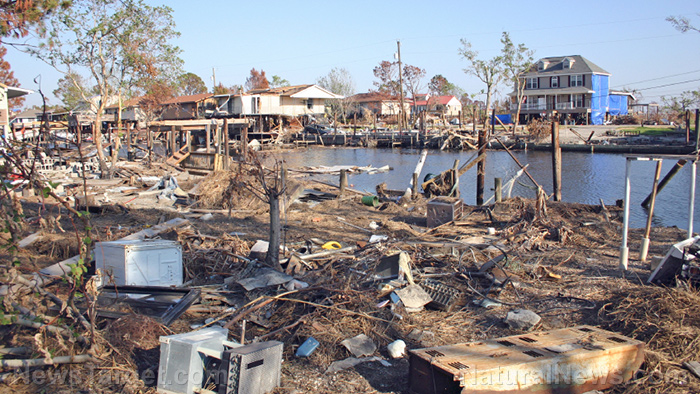5 Survival skills that will help you stay alive in the wild
06/15/2020 / By Janine Acero

A relaxing trip to the woods can quickly turn dangerous when SHTF, but if you are armed with the right skills and tools, it can be a learning experience. Here are five basic survival skills you should learn to stay alive. (h/t to Survivopedia.com)
Treating open wounds
It can’t be overstated how important it is to always keep a first aid kit in your bag at all times. Dealing with open wounds immediately can save you from worse problems.
Say an accident has happened, and you have escaped the scene and found a safer place, the first thing to do is check if you have any wounds and deal with them promptly, no matter how minor they are. It’s best to prevent infection than try to remedy it.
Here is the proper method of patching up a wound with your first aid kit:
- First, stop the bleeding. Cover the wound with gauze, or you can use a clean cloth or shirt. Put some pressure on the wound to stop blood flow.
- If possible, lift the wound above your chest and keep the pressure on for at least 10 minutes.
- Clean the wound before dressing it. If it’s a deep cut, close it with duct tape after cleaning. However, for insect bites, animal bites or puncture wounds, it is better to leave them open after cleaning.
- Wash the wound every now and then and dress it with a clean pad. Apply povidone iodine if you have some available.
Building a shelter
When building a shelter, choosing the right spot is key. Choose a dry spot that’s located high enough so that rescuers can spot you.
If you are in an environment where extreme weather is not an issue, you can make a basic shelter where you can hunker down for a while.
Follow these instructions for a basic “lean-to” shelter:
- Find a large branch and lean one end onto a tree.
- Lean smaller branches onto the main branch to complete the structure.
- Cover the structure with leaves or foliage, plastic, tarp or cloth.
If you’re somewhere colder (but not snowing), choose an area with a lot of surrounding trees, and use more leaves, foliage, clothes and other items to cover your structure.
If you can’t find a tree for your lean-to shelter, build an A-frame instead.
- Find two four- or five-foot-long branches and another one that is 10 to 12 feet long.
- Prop the shorter branches to form an “A” or an upside-down “V” structure.
- Lean the longer branch on top of the A-frame. If possible, tie them together.
- Find smaller branches and lean them onto the longer branch to complete the structure.
- Cover the structure with leaves or foliage, plastic, tarp or cloth.
Starting a fire
After you have propped up your shelter, building a fire should be the next box to tick off your survival checklist. Fire provides warmth, helps cook food and can be used to signal for help. Follow these steps for building fire from scratch:
- Gather any dry twigs, alongside dry leaves and other materials that can be used to start a flame.
- Place dry twigs in a teepee (cone) shape. Place the dry materials on top.
- Use a glass, such as from binoculars, a camera lens or mirror to concentrate the sun’s rays on the tinder. Blow to ignite a fire.
- After building your fire, add more dry twigs and leaves, as needed.
Finding food and water
There are many ways of finding food and water in the wild.
While knowing how to track wildlife would be beneficial, you can also survive in the wild by gathering insects with crunchy exoskeletons, such as ants, termites, grasshoppers and crickets. Avoid brightly colored insects – striking patterns on animals usually indicate that they’re poisonous. You should also avoid hairy insects, as well as spiders and millipedes.
Learning to safely forage for edible plants in the wild would also be beneficial, as eating certain plants may hurt your chances of survival.
Make sure to cook any food you gather or forage before consuming it to get rid of bacteria and parasites.
Rivers and ponds are freshwater sources. Before you can drink from these sources, however, you will need to filter the water first to remove any harmful bacteria and contaminants. You can also boil the water if you have a fireproof vessel on hand.
Thunderstorms can also provide drinkable water, so prepare items that can collect rainwater, such as a pair of rubber boots.
Calling attention
Nobody wants to stay stranded in the wild for too long. Call the attention of potential rescuers by learning how to signal for help.
A common distress signal is setting up three fires in a triangular arrangement. You can also make a smoky fire during the day that can be easily spotted by passersby. Items such as a mirror, flashlight, flag, whistle or brightly colored markers can also be used to signal for help.
Finding yourself stuck in the wild can be a frightening experience, especially when you least expect it; however, remembering the skills and knowledge presented here will help you live to see another day.
Delve deeper into wilderness survival by reading more articles at Survival.news.
Sources include:
Tagged Under: accident, bug out, DIY shelter, drinking water, emergency, fire, first aid, foraging, hunting, off grid, preparedness, prepping, SHTF, survival, survival food, survival skills, survivalist, treating wounds, wilderness survival
RECENT NEWS & ARTICLES
COPYRIGHT © 2017 PREPAREDNESS NEWS



















